|
I have written thousands of detailed responses to email questions, online forum postings, etc in the past ten years and thought some of you may enjoy reading these purely for the information they contain. Meg, our new web designer, is working on a new HT website which will feature a special section featuring these articles. But for now I'll post a few here to consider...
The first is from a 2006 post on Trumpet Herald... HARRELSON EMBOUCHURE EXERCISES I started this thread to pick up where I left off on the thread, "Making High to Low and Low to High Flow" so as not to turn that discussion away from the original poster's intended topic. I have included a video example of myself playing the excercises outlined below. Let me first state that the title of this thread can be deceiving. I obviously did not invent lip slur excercises and most of the credit for these concepts should go to my main influences including Schlossberg, Stamp, Adam, Clarke, Gordon and VanCleave. With that said, the innovative part of these excercises is of my own invention. I developed this system as a solution to correcting poor embouchure habits associated with my studio teaching of students ranging 4th grade through adult. Disclaimer: This is a general look at the mechanics of the embouchure, air support and related pieces of the puzzle. I strongly recommend all players in the developmental stages of the embouchure seek the advice of a knowledgeable trumpet teacher. Basic Understanding of an Embouchure Not all embouchures are the same. There are many different embouchures and each one can produce similar results. There is NO ONE CORRECT EMBOUCHURE just as there is no one perfect pair of shoes. Obviously, the best embouchure is the one that works for you. These excercises are NOT designed to tell you exactly how to hold your lips or place your tongue, etc. They are designed to teach yourself your own best embouchure. It sounds simple, but this system requires very serious study. Discipline, determination and intuition are necessary as is a trusted teacher or collegue to provide feedback and help gauge improvement. How does the embouchure work? The embouchure is responsible for exciting the air column within the instrument. A specific pitch is produced by combining the proper length of tubing with its corresponding balance of lip tension, vibrating surface (length), air speed and air pressure. Now that sounds like a lot of stuff to think about, which is why I will not have you think too much about it right now. But it will be important to eventually understand the embouchure and how it works to troubleshoot and solve problems as they arise throughout development. In the beginning, focus your attention on air flow and air speed. I stress the importance of air as it is something MOVING that we can control. The ways in which we control air flow are the keys to building a great embouchure, one that produces results in sound quality, range and endurance. Excercise #1 PLAY: PLay the following lip slurs at quarter note=60. Begin on C below the staff. Play all lower notes forte and higher notes mf. Slur all notes on one breath. BUZZ: The buzzing portion of this excercise is done immediately after playing. Tilt your bell up slightly and your head down slightly to allow a space to leak air between your bottom lip and the bottom cup portion of the mouthpiece. Buzz the notes the same pitches as you played in a slurred fashion on one breath. Do not allow air to leak anywhere other than from your bottom lip. Air leaks from the sides will not produce the desired results. Be sure your top lip remains seated on the mouthpiece in the same position you use to play. PLAY: C - G - C - G - C BUZZ: C - G - C - G - C PLAY: B - F# - B - F# - B BUZZ: B - F# - B - F# - B Repeat this excercise each time lowering the pitch by 1/2 step. Video Example I've tried to show the air leak from the bottom lip when performing the "buzzing" portion of this excercise. There is not much visual evidence of any change, which is accurate as the space for the air leak is very minimal. NOTE: I demonstrated the first part of 4 different excercises only to prevent posting four different videos. You can write out the variations and practice one each week for four weeks. Updated 2010 videos are available on youtube.com Three Octave Lip Slurs Example This is an example of 3 octave lip slurs. These are NOT recommended for those just beginning embouchure development. However, I wanted to give an example of where these excercises have taken myself and some of my students. RULE #1: DO NOT TONGUE NOTES HIGHER THAN YOU CAN COMFORTABLY SLUR UP FROM LOW C. (If you can't slur from a low C to a G above the staff, then you shouldn't be playing that G tongued either.) When slurring UP any interval, the embouchure must shorten the length of the vibrating surface, increase tension and increase air speed. Many other factors are also involved, but we'll keep things simple for now. Many players achieve slurring up large intervals in many different ways and none are incorrect so long as they produce a beautiful sound AND exhibit reasonable range and endurance. Like a great math problem, the mechanics of trumpet playing have many different solutions that achieve the same or similar results. Some players pivot their horn/mouthpiece, others use the tip of their tongue to aid the lips in controlling the air flow, still others raise their tongue in the mouth to close the oral cavity and add lots of backpressure. There are many other ways to slur UP which produce acceptable results...too many to list here. Adding the tonguing function to the same wide interval UP should not change the mechanics of playing to any extreme. The tongue, however, is often responsible for common embouchure problems. The tongue acts as a valve that provides a brief moment to build up back-pressure, which in turn creates the proper air speed to attack a higher note. Problems arise when players begin tonguing notes higher than they can slur. Students will often experiment tonguing high notes until they can eventually "hit" that one high note they heard about...the almighty HIGH C. I must admit, I too fell victim to this very approach in high school and really messed up my own embouchure for a solid 5 years! Back to the tongue... When a player learns to attack high notes, but cannot physically sustain them something else takes over to achieve the pitch "sustain" for more than a fraction of a second. Pressure and/or over-blowing are the two most common scenarios. The high note is attacked clearly by building back-pressure with the tongue and then sustained by adding mouthpiece pressure or copius amounts of air. You can differentiate between the two by the sound quality of the "sustain" part of the note (and by watching the player!). Those who use more pressure for the "sustain" tend to play with a thinner sound which often trails off after a few seconds or a few tries. And they ALWAYS show a deep mouthpiece ring on their lips and/or teeth indentations on the insides of their lips. Those who use large amounts of air to "sustain" the note usually play quite loud and have very little control or ability playing soft. Most players actually use some combination of both of these less-than-effective techniques and get by for many years or their entire lives. But it doesn't have to be that way. We can all learn how the mechanics work for each variation of the embouchure and achieve greater results with that knowledge. I know this is a long explanation, but I hope it has shed some light on the importance of Rule #1: DO NOT TONGUE NOTES HIGHER THAN YOU CAN COMFORTABLY SLUR UP FROM LOW C. I've received some feedback from several players and there are many questions, which is to be expected. Too bad everyone following this thread can't just come over some Saturday for a masterclass. First, the purpose of the buzzing excercise is simply to teach your embouchure to control air flow WITHOUT the aid of mouthpiece pressure. This system requires only enough mouthpiece pressure to seal the lips against the mouthpiece to prevent an air leak. All buzzing should be performed with very little pressure to the upper lip and a space between the bottom lip and mouthpiece. I strongly recommend making the buzzing system a regular part of your practice routine. Play a simple linear phrase or excerpt and then repeat using the buzzing technique. Listen for correct pitches and don't worry if it sounds horrible. For instance, play a scale up and down one octave with an arpeggio at the end. Then repeat this with the buzzing technique. Do this at least 10 minutes everyday and you will begin to feel facial muscle fatigue everywhere except where your lips touch the mouthpiece. This is normal as your muscles are learning to control the air flow with a new embouchure. Some may already be using a variable air speed/flow embouchure and buzzing will only strengthen your embouchure. Buzz everyday until you feel muscle fatigue and then rest. Do not overplay as this can easily lead to very bad practice habits and make learning a new embouchure very difficult. START AN EMBOUCHURE JOURNAL I recommend anyone following this thread begin taking notes on your current embouchure as defined in the following section. Note how you rate the following criteria as well as your general impression of your embouchure, concerns and questions. Start an "Embouchure Journal" today and you'll soon realize the benefits of recording your progress for future reference. DEFINING EMBOUCHURE TECHNIQUES & ATTRIBUTES: To better understand the function of the embouchure and the various techniques in use, it is necessary to sort all embouchures into two general categories; those that produce consistent results and those that do not. This may seem obvious, but far too many players come to me for lessons and defend embouchures that produce inconsistent results in sound quality, range, endurance, flexibility, etc. If it isn't working, then why defend it? Since the focus of this thread is improving one's own embouchure, it is important to define the criteria by which we measure success against struggle. These criteria are listed in order of importance and include SOUND QUALITY, FLEXIBILITY, ENDURANCE, PHYSICAL CONDITION OF TISSUE and RANGE. These five criteria are ALL necessary in defining a successful embouchure, one that produces results that can be measured. If any of these five are lacking, the embouchure is in need of considerable attention. SOUND QUALITY: Sound is by far the most important aspect of musicianship. However, not all players will play with a good sound when learning a new embouchure. Beware claims that you must develop sound before all other pieces of the puzzle. True success lies in developing all five criteria simultaneously. With that said, if your sound is excessively harsh, thin or airy, consider this and consciously focus on improvement in this area. FLEXIBILITY: The ability to move from one note to another WITHOUT THE USE OF THE TONGUE (attack) is our current definition of flexibility. To further clarify, the variable arching of the tongue is a factor in flexibility, while the attack mechanism is not. In simple terms, one can measure flexibility by slurring up and down from low C. There is really more to it than that, but keep it simple and test your flexibility in this way and record your results. ENDURANCE: This is the most commonly over-looked aspect of trumpet playing. I meet so many players and students that boast a high range and exhibit very little endurance. What good is a high C if you can only play it three times a day? Endurance is directly related to flexibility, range and tissue damage. Poor endurance is almost always accompanied by tissue damage, poor control over dynamics and inconsistent flexibility. By definition, endurance is measure of time one can consistently perform with good sound, flexibility, range and resilient tissue before fatigue deteriorates performance. DO NOT measure endurance beyond the time any other criteria begin to deteriorate. Record your average endurance and be conservative and honest. If you can only play your normal range for 10 minutes with a good tone, then that is your starting point on our journey. PHYSICAL CONDITION OF TISSUE: This is something every player has experienced at one time or another with the vast majority of all players struggling with this problem daily. The physical condition of your lip and muscle tissue is extremely important. Deep mouthpiece, teeth and braces indentations are the most common types of tissue abuse and damage. The classic example of severe tissue damage can be studied in the photography and videography of Louis Armstrong. Louis is one of my all-time heroes for many reasons, but the fact remains that he played with a pressure-dependent embouchure for his entire career and there are scars to show severe muscle and tissue damage. There are many historical accounts of Louis working so hard to play high C's at the end of a show, that his lips literally bled on stage. His concert/tour schedule was delayed several weeks on more than one occasion to allow his chops to heal. This is an extreme example of an amazing musician, the KING of jazz and trumpet and we should all take care to learn from his lessons. Tissue damage is a real problem that should be avoided at all costs. The real problem is our tendency to use pressure to play higher. I will address this problem and thoroughly explain a solution to the pressure game in a later post. Look in the mirror at the end of your practice session and record any and all marks and/or damage or abuse to your lips inside and out. If you know this is a real problem in your playing, I highly recommend taking a series of photos to document your current embouchure flaws. Just seeing these photos is motivation to change your embouchure for the better. RANGE: I have listed range last on the list of criteria for one reason, it really isn't that important. Nobody cares that I can play double high C anytime I want. Do you know why? Because to this very day I have only had that note written in my music 3 times. Once thanks to Wynton Marsalis transcribing a Lincoln Center Jazz Arrangement played by an amazing lead player. And the other two times in horrific arrangements of Maynard Fergusen tunes. Now, I love to scream as much as anyone, but I don't do it for a living and would much rather hear a beautiful soulful melody than high notes. Guess what? Normal people who pay good money to hear trumpet music don't want to hear high notes that often either. Range, as defined in this treatise, is directly related to flexibility. Your useable range should be no higher than the results of your flexibility test. DO NOT TONGUE NOTES HIGHER THAN YOU CAN SLUR UP FROM LOW C. Record your results and start to think about what reasonable range you would like to someday achieve. Don't write down double high C at the expense of becoming a true musician! WHY CONTINUE TO PLAY ON A POOR EMBOUCHURE? Most players know there is something lacking in their embouchure, but do not know what to do about it or where to start looking for help. We try new mouthpieces, new horns, new techniques we heard about at rehearsal, etc. But how many of us actually make a concerted effort to change things for the better? And for those who do, what are the risks? Changing embouchures is dubbed as "very difficult" at best and we have heard more stories and rumors of failed attempts than successes. So why do it? To become a better player. We do it because we want to perform the music we hear in our mind's ear. We do it because we either love to play trumpet or love music or both. We do it because we are competitive and we wish to satisfy our need to accomplish something that somehow defines us either personally or within an organization or group of peers or society as a whole. Playing trumpet is not like playing piano. Anyone can learn to play piano well so long as they have at least 2 thumbs, 8 fingers and a reasonable commitment to practice. Trumpet, on the other hand, is not so simple. We must train ourselves to hear pitches before playing them. We must train our muscles to adjust for each pitch, air speed, pressure, volume, tonguing, slurring, fingering combination possible and seamlessly do this in time with musicality and grace. Well, learning to play trumpet is certainly no picnic and requires many times the effort to learn piano or violin with much-added frustration and confusion. But the greatest challenge learning trumpet comes when accepting criticism, either personal or from others, when performing. All trumpet players can recall a performing a solo, audition, etc. that did not go as well as planned. The psychological affects of bombing a solo or audition can set us back months or even years. As trumpet players, we judge ourselves to some degree by our success at playing trumpet. These reasons should warrant your full attention to improving your embouchure. I personally suffered the pain and frustration of playing on a pressure-dependent embouchure for 8 solid years. The worst part is that those 8 years were in high school and college, when the pressure to succeed seemed more real than ever. It wasn't until the end of my college career that I finally began changing my embouchure for the better. I only wish I had today's resources...online discussions, forums, lessons, etc. I strongly urge every player questioning their embouchure to take at least one lesson with a teacher known for their knowledge and success in this area. I traveled 2,000 miles to get a lesson with Mark VanCleave and he set me on the right path in only 4 hours! To sustain a note at pitch "X" and dynamic "Y" one must produce the correlating oral cavity, lip length, lip tension, air flow, air speed and air pressure. Unfortunately, there's even more to it than that, but I'll simplify everything to make my point. Something must sustain the frequency after the initial burst of air released by the tongue. Some use mouthpiece pressure to press the lips against the teeth and produce the required balance of air/lip factors and others will blow very hard hoping to hold the note. Neither is truly effective unless all notes are being played at ff or louder. So how can you sustain a high note if not by use of the left arm or turning purple? By controlling the air flow with a balanced and controlled combination of tongue position, lip tension and aperture. I promise to elaborate soon...but the key is controlling the air flow with a balanced body system. There is so much talk about the right mouthpiece or horn or perfect embouchure, etc. What it really comes down to is balancing your entire body and mind with the mechanics of your mouthpiece and horn. It is no coincidence that so many great performers from all walks of life have studied martial arts, yoga, tai chi, zen and the like. Playing trumpet efficiently is more about bringing your body into harmony with the horn than the right mouthpiece or tongue placement. AND IT IS DIFFERENT FOR EVERYONE. If you feel like you're fighting the horn, there is something missing.
2 Comments
I promise to write soon, but the shop has a way of keeping me very busy. Here's the latest horn I built and there are two others done as well so watch for more photos.
Here's one photo, I'm too exhausted to write today. You'd be surprised how much work was involved in building this horn.
Today I will feature some of my latest design projects and share with you some of my personal comments and challenges. 1. This project involves adding a quote from my personal facebook page (my own words) to a Summit SWE tuning slide. I created a flat surface above the slide and pocketed inside the text with a .014" endmill at 20,000rpm. This part is being cut on the VMC as I type so I will show a finished photo later. I could have designed the text to be raised and contoured with the curvature of the tuning slide surface, but this would add hours to the cutting and quite a bit of time to the design. Maybe I'll do raised text on the next similar project. Here's a photo of the toolpaths that cut this side of the SWE tuning slide. There are four sides to each SWE tuning slide, which explains why I sometimes work on toolpaths and designs for as many as 4 weeks non-stop to create a production scenario that cuts accurately, efficiently and is safe for my machinery. This custom design requires my VMC to travel to 102,143 different positions. By traditional machining standards, this is a massive program that would be considered a major undertaking unless you're talking to a custom mold and die shop. Consider this, only one command needs to be off by one decimal point to crash my VMC and cause thousands of dollars in damage. This is why I often black out days in my schedule where we have no visitors, I don't take phone calls and sometimes will not even speak with my fellow co-workers. Each program has to be perfect out of my own perfectionism AND out of necessity to machine safely. You may see photos on facebook where I look intensely focused...I AM. Okay, this program just finished. I'll go rinse off the part and snap a photo...  2. The next project we'll explore is design and production of the latest 2011 Nouveau braces, which differ greatly from previous versions. The new design allows different tuning slide and bell crook spans, which solves some serious production limitations that the end user never considers. Now it is possible to build a Nouveau trumpet with just about any bell and tuning slide regardless of span lengths. This rendering shows a thickness analysis of the Nouveau valve casing braces, which allows me to find thin areas that could potentially affect SWE and solder surface area. The colors are on a scale that I set, in this case red is .100" and dark blue is .500". The blue cylinders are the bolts that hold down my stock when cutting. These are drawn into the design to prevent hitting them when cutting.  Here you can see the parts cut on one side. Against the advice of most fellow machinists, I use high quality coolant to speed up production and increase tool life. Many claim that coolant is too messy to deal with and use it only for hard to cut materials. My motto is make every cut as easy as possible even if it means washing the part afterward. This part will need to be flipped and cut on the backside with a separate program. 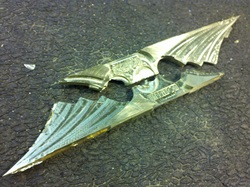 Finished Nouveau braces cut from the stock. Next step, carefully trimming the edges. Then hand sanding, brushing, radius profiling of the leadpipe and bell mating surfaces and final fitting to the valve casing specific to this build. To highlight the depth of 3D designs like this, I fill crevices with black wax unless plating is involved. This client requested custom text on one side of the brace, which was designed in the same font as the HT logo...  3. This next example was designed to go on the same trumpet as the previous Nouveau braces. This is a special New Orleans themed Nouveau Summit Hybrid horn so the elements are varied considerably. This is the man hole cover made popular by rampant thefts in New Orleans right after Hurricane Katrina. To design this, I had to convert a photo to curves, then manually edit and remove hundreds of them to make sense of the image. This required a considerable amount of time and would rather not repeat the process.  However, I have done this kind of work so many times that I'm fairly good at it. On my list of "must haves" is a special software program that does most of this with the click of a button. The image to the right shows how messed up this image is when I begin. Below are screen shots of the design added to the Summit SWE tuning slide. This program was incredibly large with more than 148,000 machine points or about 47% larger than the first example. The entire design is only 1.4" in diameter with most letters measuring just 1/16" high. I omitted the smallest text to clean up and simplify the design. This project required approximately 28 hours of design, programming and cutting.  4. Next is the leadpipe and pinky ring of the Nouveau Summit Hybrid. Of course the Saints logo is a necessary element of any New Orleans project! I really wanted this to be prominent on the horn so I made it a full 3/4" thick protruding from both sides of the leadpipe. This design will incorporate three small paua inlays in green, yellow and purple which will be echoed in the finger button inlays. The pinky ring is based on the Nautilus-inspired Nouveau theme from the valve casing braces above. I will be finishing the leadpipe and final assembly (soldering) of this trumpet later today so I'll try to remember to add photos here tomorrow. But if I don't, somebody please remind me ;) Some of you know that my company is constantly in a state of change. I like to think of this as progress...incorporating innovative ideas to make our products, process and service more fun, efficient and effective. Some of you have seen me doing this for 5, 10 or even 20 years. The truth is I became addicted to change very early on. My parents were truck drivers so I'm a product of waking up every morning in a different place. Change is my life.
Harrelson Trumpets has taken on two new employees to prepare for a number of changes in our business model. First, we have Meg who is now our website designer, photographer and videographer. She's very excited to be working with us and in her first week has created a new layout for our next website launch. Meg is especially important to us since we've been on the web since 2001, but have never had a proper web presence. This is due to the fact that Jen and I built the website(s) ourselves with no training. We did our best, but that isn't good enough so now we have Meg! This will give Jen the freedom to explore various PR venues we have ignored up until now. I have turned down numerous high profile interviews simply because we don't even have a press kit. This will change. I also hired a second shop assistant, Evan, who is learning metal finishing. My future production goals involve the majority of future leadpipe and bell components being milled on the VMC hence the need for an expert metal finisher to free up more of my time. We at HT are embracing change, now let's go build some cool horns... A constant question I am asked is where I purchase the valvesets used to build Harrelson Trumpets. The answer has been different depending on when the question was asked. Previous suppliers have included Kanstul, Bauerfeind, numerous unknown factories overseas kept secret by middlemen, B&S and others. Complications arose with all of these companies and/or their products. For instance, the casing material was often too thin after threads were cut for top and bottom caps eventually causing premature wear and shrinkage when caps were over-tightened. Another company builds the highest quality stainless steel pistons, yet they forced us to wait 6 months for each order creating slow supply headaches. I have spent ten plus years searching for the best supplier of valvesets and found them a few years ago. My supplier told me they were made in Germany, which was a blatant fabrication I learned just last year.
Believe it or not, the best valvesets are made in Taiwan. This doesn't surprise me as many of the best machine shops are now located in Taiwan producing everything from high-end cnc machinery to extremely common auto parts to the majority of high quality valvesets for brass instruments. Our supplier builds valvesets for Bach, Conn, Taylor and many many other brands you know and trust. Chances are a good portion of your vehicle, regardless of make and model, was produced in Taiwan. Coming from a man who believes you should buy locally and support your own economy, it is interesting that I buy from Taiwan. Here's why... they do it better, they do it faster and they do it they way I asked. Unfortunately, there isn't an American company that could live up to my expectations and Germany was too slow. In a world where the number of suppliers are shrinking while the few remaining producers capture more of the market, I chose the very best. So why not produce my own valveset? I'm working on it and intend to someday produce a Harrelson valveset along with just about every other piece of the trumpet. But my design is dramatically different from the 1800's design in use by virtually every trumpet brand today. The new Harrelson design will likely meet a great deal of opposition simply because it is different and extremely simple. It is in the prototype design stage and this is something I'm putting a great deal of time into along with numerous other projects. You could see the first Harrelson valveset within a year and as with almost everything I produce, the prototype is usually only a few weeks from becoming production should there be enough demand. With all this said, the very best valveset is nothing more than a commodity when sold in mass quantities. So why produce a commodity with my name on it when I can focus my energy on SWE, aesthetics and variations in components? Do Dell or Apple produce their version of Intel processors or simply buy what is proven to be the best? And are the end products the same or drastically varied depending on who designed a product based on the exact same processor? Had either company focused on producing every single piece of their computers, we'd likely have two small companies capturing relatively small and unknown portions of a huge market. Instead, they bought the best (which happened to be the same product) and built around it to create a loyal following of die hard fans. Valvesets and processors are commodities. Back to milling that insanely complicated Summit Art Nouveau trumpet... It isn't a secret that I offer Aluminum SWE Trim Kits, though it seems very few people know this is an option. Aluminum top caps, bottom caps and finger buttons have been in production for all HT instruments for at least 6 months now with the option of black anodizing available and other colors by special order.
So why aluminum? It is considerably lighter than brass, yet more difficult to machine. Aluminum is more efficient in terms of SWE in tube, leadpipe and bell applications and less efficient in trim parts. However, sometimes less efficient trim is exactly what balances projection in front of the bell and behind the horn. Lead and commercial applications commonly require higher efficiency to make the high notes easier while maintaining audible feedback to the player behind the bell. Here, an aluminum trim kit is advantageous over brass. And sometimes the player simply wants the comfort of less weight. Either way, aluminum may be the solution. Black anodized aluminum trim and finger rings not only reduce weight, but the look is striking and surprisingly classy. The next logical question is what else can be made from aluminum? Well, I intend to produce every piece of the trumpet from aluminum over time. I don't see this as the ultimate solution material, simply another option in my vast list of what may be offered. Would a completely aluminum trumpet sound and play as well as one made of brass? Absolutely! Would it play better pound for pound? The answer is a resounding YES. In fact, a Gravity trumpet that weighs 7 pounds in brass would weigh around the same as a Bach Strad if made in aluminum and the efficiency would be greater. Imagine a 2 pound horn that makes the best Bach sound and feel like a toy...that's an aluminum Gravity. Without giving too much away...I am experimenting with many non-traditional materials in prototype and production scenarios. Don't be surprised if you soon see trumpets and trumpet parts on my website made from new wood composites, kevlar, carbon fiber and of course anodized aluminum. I have been shopping for new and used cnc machinery for years and the price tag I will consider has been gradually been increasing over the years. My dream machine costs around $540,000. Yes, that's half a million dollars and I want one. But get this...the machine tool salesmen think I'm crazy for wanting more options on my machines. The conversation with salesmen (they're always men) is the same each time. They ask to see the parts I'm making and emphasize that I should only buy what I need and no more. I disagree. Buying a machine that produces the part in my hand only repeats what I've done before. I want to stretch the design to the limits and this requires more machining options rather than buying more of my existing limits. I explain this and they disagree with me, then I call the next company and repeat the process. The first guy could have sold me a 5-axis vmc had he simply opened his eyes to possibilities. I want solutions to problems I have yet to create by pushing the design of trumpets. Why don't they get this?
So far, Hurco, Haas, Toyoda and Makino have lost my business to lack of imagination. Ironically, the Taiwanese toolmakers seem to be the receptive audience. Maybe this is why Japan, Taiwan and China dominate manufacturing...they try to see the future before it slaps them in the face! One of these days (hopefully be the end of this year) I'll have a 7-axis turning/milling center. This will change trumpet design dramatically in my little world. Imagine the entire trumpet as modular with interchangeable components switched out in seconds or minutes yourself at home without the need of solder or the risk of plating or surface finish. I can't wait to buy this machine the salesmen don't want to sell to me! |
Jason Harrelson
Inventor, Musician, Educator and Founder of Harrelson Trumpets, Trumpet Momentum and Harrelson Momentum. Archives
July 2024
|

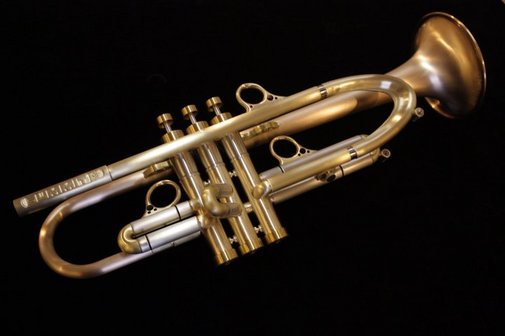
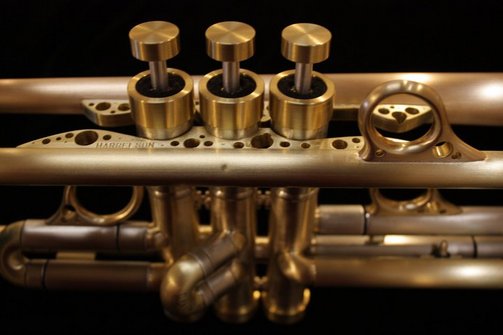
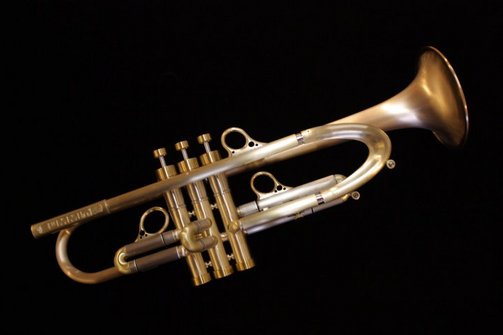
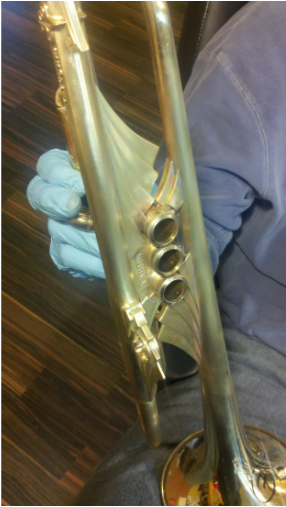
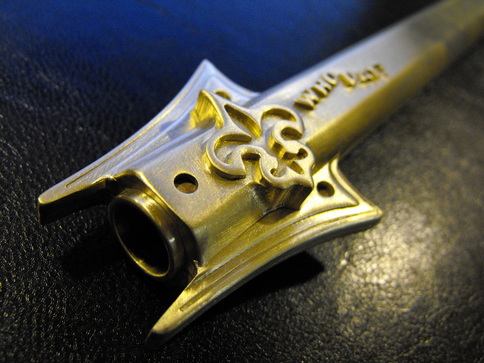

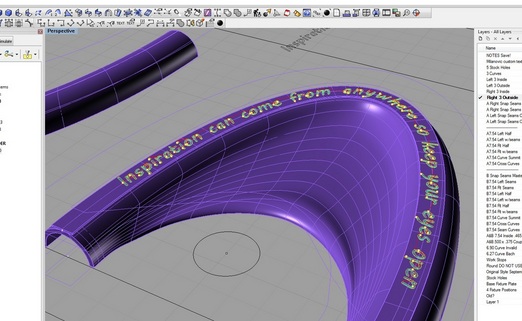


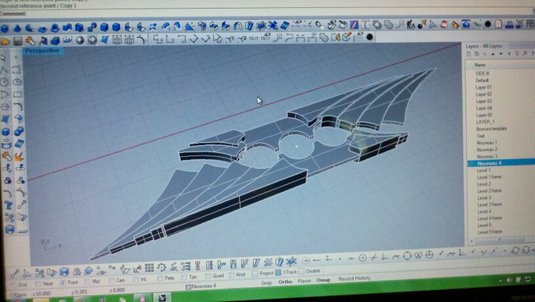
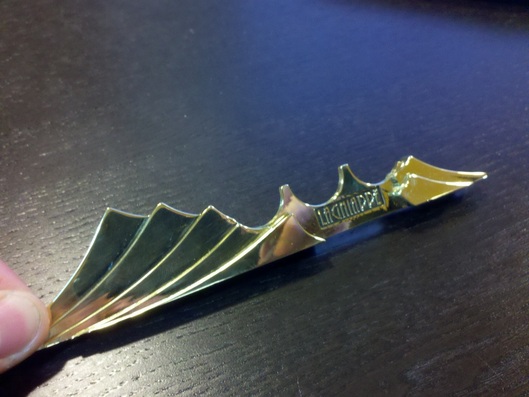
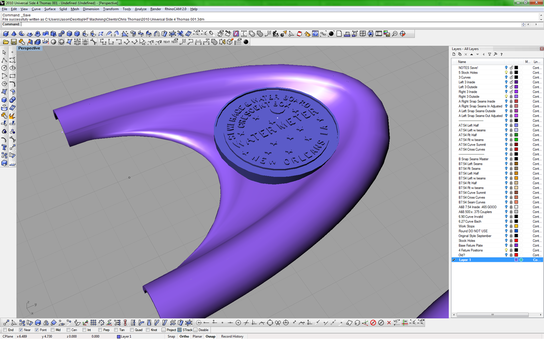


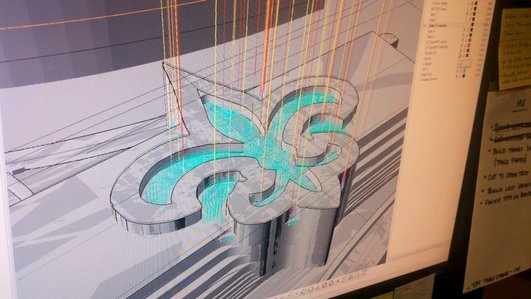
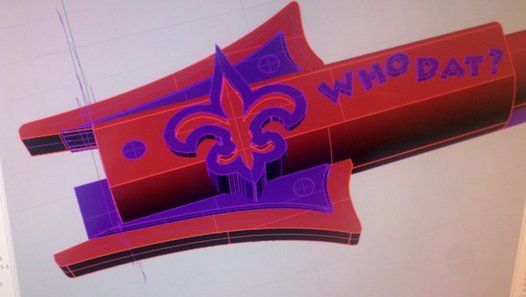
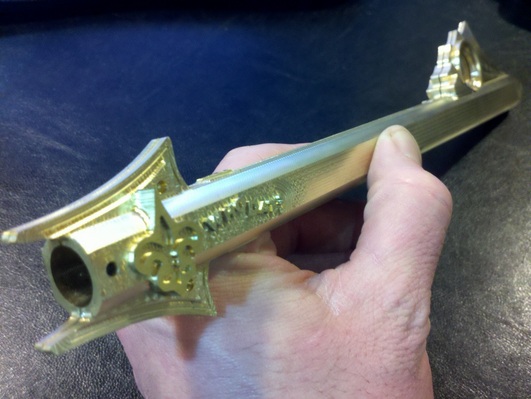
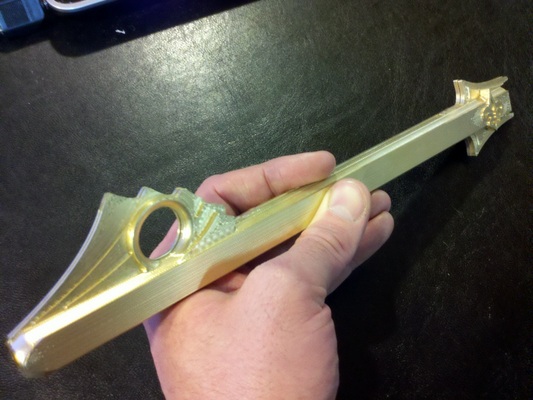
 RSS Feed
RSS Feed
